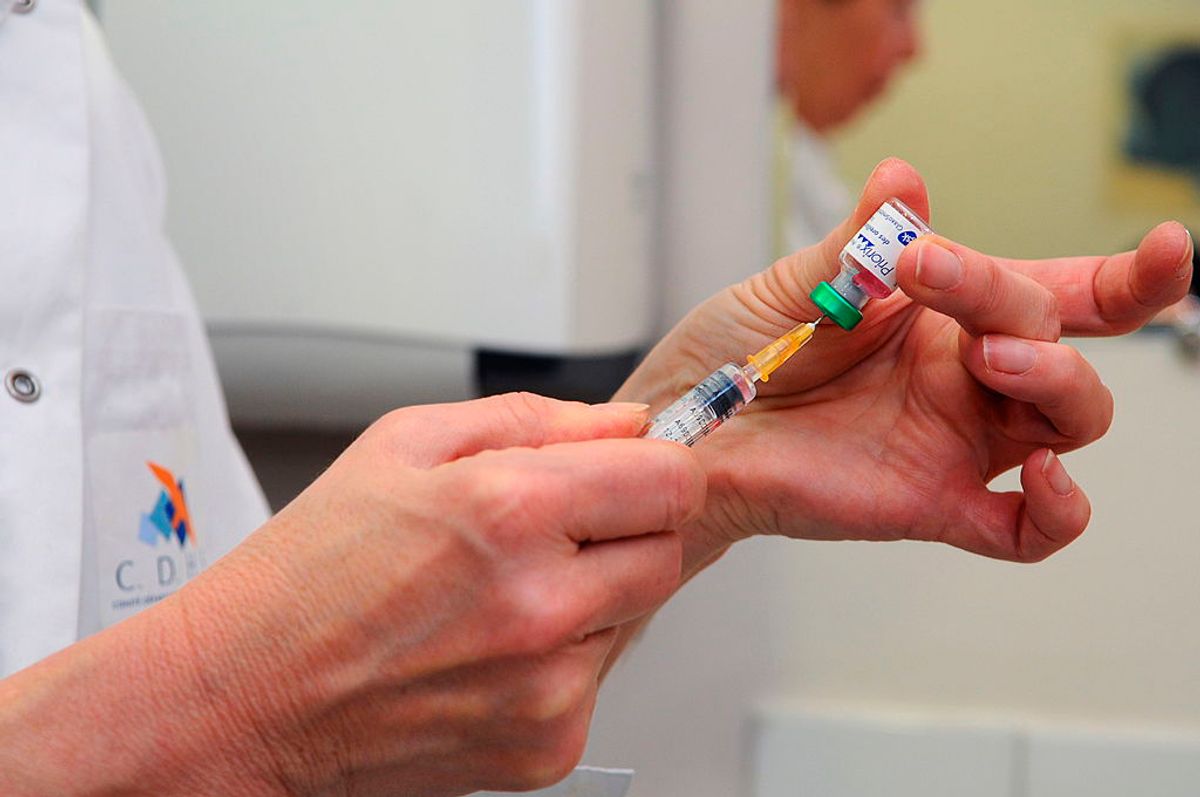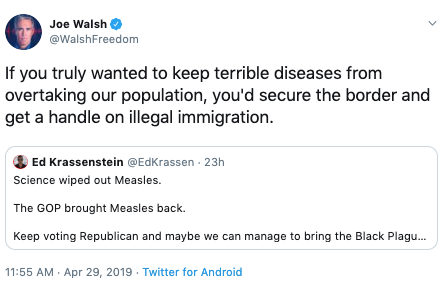In early 2019, the United States suffered its worst series of measles outbreaks since 1994. Between 1 January 2019 and 26 April 2019, according to the Centers for Disease Control and Prevention (CDC), 704 individual cases of measles had been confirmed in 22 states. “This is the greatest number of cases reported in the U.S. since 1994 and since measles was declared eliminated in 2000,” the organization reported.
Dubious websites and citation-free social media posts have attempted to suggest that these measles outbreaks are the result of immigrants who illegally crossed into the U.S. via the Southern border — a common but almost-always-false trope employed by those who oppose more open immigration policies. For example, pro-conspiracy, anti-vaccine website Natural News claimed on 28 April 2019 that, “It’s the disease-ridden illegal aliens that are bringing infectious diseases into America” in a story titled in part, "The Measles Outbreak is a Massive False Flag." That report cited a story from Alex Jones' Infowars that misrepresented a Fox News segment about a measles outbreak in New York.
In keeping with this theme, on 29 April 2019, in response to a tweet claiming "The GOP brought Measles back," former GOP congressman and radio personality Joe Walsh tweeted: “If you truly wanted to keep terrible diseases from overtaking our population, you'd secure the border and get a handle on illegal immigration.”
No factual basis exists to support the claim that illegal immigrants are the cause of the increase in U.S. measles outbreaks. But multiple pieces of evidence do support the claim that unvaccinated people who have traveled to areas with high rates of measles and then returned to the U.S. are the cause of the uptick. As of 30 April 2019, measles outbreaks — defined by the CDC as three or more simultaneous cases in the same area — were identified in nine geographic areas:
- New York State, Rockland County
- New York City
- Michigan
- New Jersey
- California, Butte County
- California, LA County
- California, Sacramento County
- Georgia
- Maryland
The epidemiology of many of these outbreaks has been researched by the CDC, which concluded that “these outbreaks are linked to travelers who brought measles back from other countries such as Israel, Ukraine, and the Philippines, where large measles outbreaks are occurring.”
The cases in New York State’s Rockland County and New York City, for example, have been tied to an unvaccinated Orthodox Jewish child who picked up measles on a trip to Israel, and who then spread it among the largely unvaccinated community to which that child returned. As reported by New York City’s Health website:
As of April 29, 2019, there have been 423 confirmed cases of measles in Brooklyn and Queens since October. Most of these cases have involved members of the Orthodox Jewish community. The initial child with measles was unvaccinated and acquired measles on a visit to Israel, where a large outbreak of the disease is occurring. Since then, there have been additional people from Brooklyn and Queens who were unvaccinated and acquired measles while in Israel. People who did not travel were also infected in Brooklyn or Rockland County.
This New York measles outbreak, comprising 423 of the 704 individual infections, represents the vast majority of cases that are part of this troubling resurgence of measles in 2019. It was caused not by illegal immigration across the Southern border, but by unvaccinated American citizens traveling abroad in Israel — a country that is currently having its own measles epidemic. Similarly, the outbreaks in California have been tied to four cases of people traveling abroad and returning to the United States:
In 2019, four outbreaks linked to patients with international travel have been reported in California. As of April 24, 2019, 38 confirmed measles cases, including 28 outbreak-associated cases, have been reported.
As argued in Vox, “Had these travelers and their families been vaccinated, we wouldn’t have measles here. And when you couple the ease of opting out of vaccines with the fact that there’s a greater global risk of catching measles elsewhere, it’s not hard to see why the disease is now roaring back.” Those who attempt to tie the rise to Southern-border-crossing immigrants do so by ignoring the epidemiological realities of a world that sees one billion people cross international borders every year, sometimes into and out of countries with low vaccination rates or ongoing outbreaks.
Israel currently is experiencing a measles outbreak that vastly outpaces that experienced in the U.S. in 2019. As reported in the Daily Beast, Israel has seen diagnosed cases of measles “soar from about 30 in the year 2017-2018 to almost 4,000 in the year 2018-2019.” Ukraine, another country listed as a source of measles exposure to unvaccinated Americans, also is experiencing an unprecedented outbreak of measles. That country’s acting minister of health told Science that the rise is caused by “a decade of corruption, war, a lack of political commitment to vaccination, and antivaccine sentiment.” The Ukraine saw more than 15,000 cases and seven deaths in between 28 December 2018 and 1 February 2019.
The Philippines, the third country indicated by the CDC as a source of contact for international travelers who could carry measles to the U.S., is also experiencing a massive outbreak. As of 26 February 2019, “over 12,700 measles cases [were] officially reported by DOH [Department of Health] with 203 deaths from 1 January to 23 February 2019.” According to that country's health department, “the Philippines has seen a decline in the first dose of measles vaccine in the past decade — from above 80% in 2008 to below 70% in 2017. Initial figures for 2018 indicate further decrease.” For herd immunity to kick in and protect people from measles at a population level, the number of those vaccinated needs to approach 95%.
Conversely, the countries of origin from which immigrants are attempting to cross the Southern border have comparatively high vaccination rates and are currently not experiencing large scale outbreaks of measles. As we reported in a 2018 iteration of this claim, many of the countries in Central America from which the migrants are attempting to flee have higher vaccination rates for measles than does the United States. In 2017, 92% of children aged 12-23 months were vaccinated for measles in the United States. In Mexico and Honduras, that figure was higher, at 96% and 97% respectively. El Salvador and Guatemala have seen a recent decline in vaccination rates, with 85% and 86% coverage in 2017 — the most recent year for which World Bank data is available.
Claims that measles outbreaks in the U.S. are caused by Southern-border immigration are therefore wholly unsupported by factual evidence or hard data. To claim otherwise, one must ignore the actual data that links these measles outbreaks to specific unvaccinated Americans traveling abroad in measles-prone regions. For both of these reasons, the claim is false.


